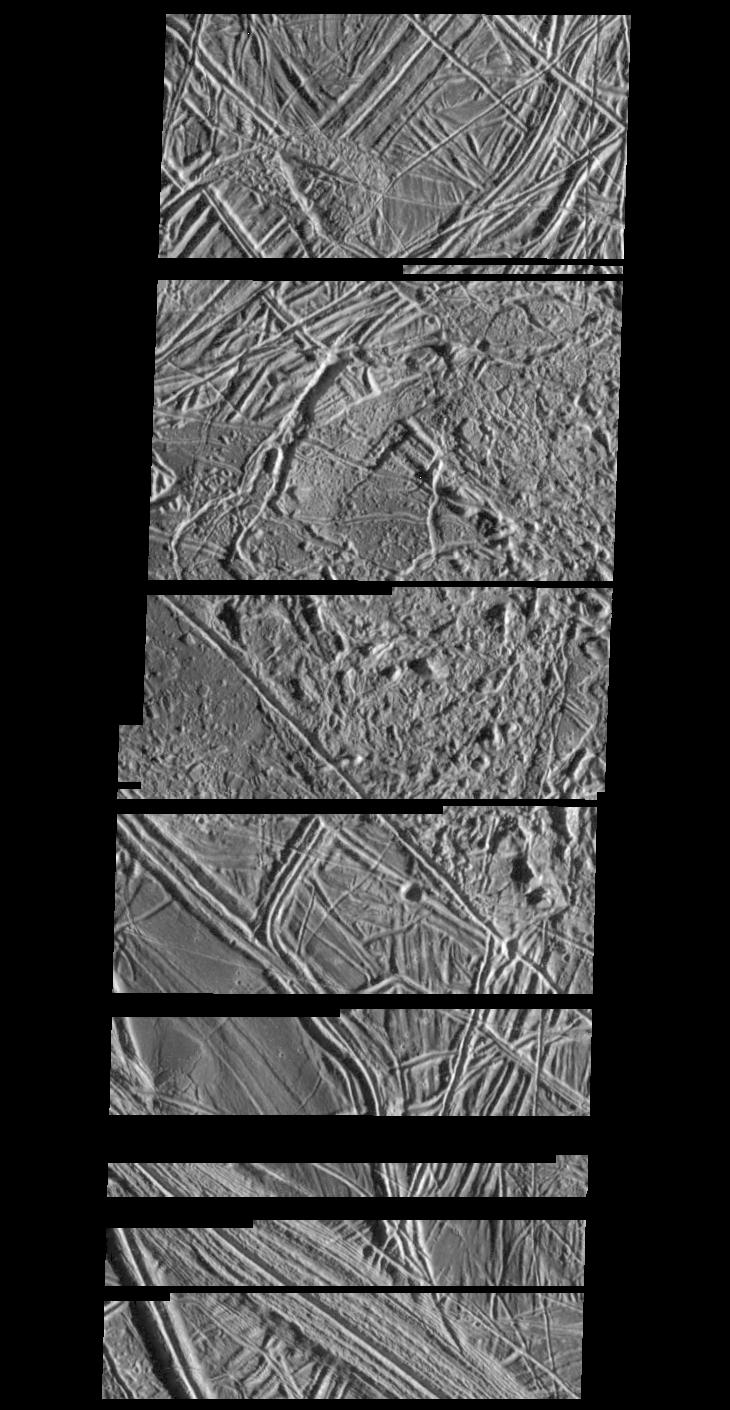All Resources
Structurally Complex Surface of Europa

This is a composite of two images of Jupiter's icy moon Europa obtained from a range of 2,119 miles (3,410 kilometers) by the Galileo spacecraft during its fourth orbit around Jupiter and its first close pass of Europa. The mosaic spans 11 miles by 30 miles (17 kilometers by 49 kilometers) and shows features as small as 230 feet (70 meters) across. This mosaic is the first very high resolution image data obtained of Europa, and has a resolution more than 50 times better than the best Voyager coverage and 500 times better than Voyager coverage in this area. The mosaic shows the surface of Europa to be structurally complex. The sun illuminates the scene from the right, revealing complex overlapping ridges and fractures in the upper and lower portions of the mosaic, and rugged, more chaotic terrain in the center. Lateral faulting is revealed where ridges show offsets along their lengths (upper left of the picture). Missing ridge segments indicate obliteration of pre-existing materials and emplacement of new terrain (center of the mosaic). Only a small number of impact craters can be seen, indicating the surface is not geologically ancient.


